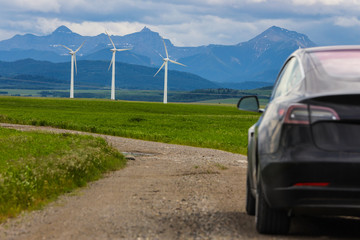Checkmate, Gasoline
October 7, 2020

Along with his massive team, Elon Musk, whose name has come up in many different technological innovation industries, has now revolutionized his own cars for the future of both humans and our Earth. Our time here as humans on Earth is limited as long as we keep going down our current path, and it’s decreasing every day.
“We’re experiencing these issues on a day to day basis,” said Musk, at his 2020 annual shareholder meeting and battery day. “It’s incredibly important we accelerate the advent of sustainable energy, time really matters.” He went on to say, “This battery does not only improve the functionality and performance of the upcoming Tesla cars but also drastically improves the carbon footprint created by them. We as a country are also making very good progress in terms of our carbon footprint. The new United States electricity capacity is 32 GW, which 76% comes from wind and solar energy. In the last decade, we were able to cut coal usage for electricity in half.”
A few numbers from Tesla:
- Over 1 million electric vehicles sold.
- 26 billion miles driven collectively by consumers.
- 5GWh of stationary batteries.
Though these numbers are great and sound good, there is a lot of work left to be done, and hopefully we can all help Musk in shaping a better tomorrow. Looking forward, being able to switch successfully to sustainable energy involves creating more affordable electric vehicles and energy storage, and building more factories.
Musk already has a goal in mind: Terra Wats. We’re going to need ten a year, and Musk is already started on getting the world there in order to transition to full electric sustainability.
One problem: the batteries in the current Tesla cars aren’t going to be able to cut it at 0.15 TWh. So just like any regular person, Musk goes and innovates 5 new aspects of his manufacturing process that will halve the cost per KWh. Innovating cell design, the cell factory, anode and cathode materials, and the integration of cells into the vehicle.
Quick history: The first integration of battery cells came from laptops and flashlights. The 18650 is the main lithium ion battery that everyone knows and loves. Tesla later moved and engineered larger 21700 batteries, which were bigger and had 50% more energy, in order to construct them, thin ‘sheets’ of anode and cathode are layered on top of each other and rolled up. Each sheet is attached with a little tab, one an anode and one a cathode, that pass power to terminals on the outer case.
When Tesla was ready to make a larger battery, the design of the 21700 limited itself. When engineers attempted to increase the size again, thermal issues would occur and discharge rates would be impacted. If they were to try and combat the thermal problem, they would have had to slow the charge rate, which is one of the main reasons why consumers don’t buy electric cars in the first place.
Without further ado, say hello to tables batteries. When the two sheets roll up, there is no longer a tab that connects, but the entire surface area of the cell. It is now a spiral shaped design that connects a ton of small tiny tabs all over the side, which also drastically reduces the travel distance needed for the electrons. Coming in at 46mm diameter and 80mm length, the 4680 is a whole new beast that will carry Tesla where it needs to go in order to meet the goal of 10TWh a year. In fact, Tesla claims that this new battery is able to deliver up to 6 times the power because of this lower distance traveled. Another factor that the 4680 helps make more efficient is the manufacturing process.
Being able to have the entire charge point on the side instead of having to implement tabs for all electrons to go through, the plant will be able to continuously roll cells. This decreases the amount of time needed to produce cells, and will help Tesla get closer to achieving their goals of delivering affordable electric cars to the average consumer. The largest problem with these tabless cells is that Tesla simply cannot make enough of them fast enough, even with the multiple gigafactories they have around the world. It will be a little bit until these will make their way onto the market, but one thing is assured-they will help us take another step into the right direction of saving our Earth.












